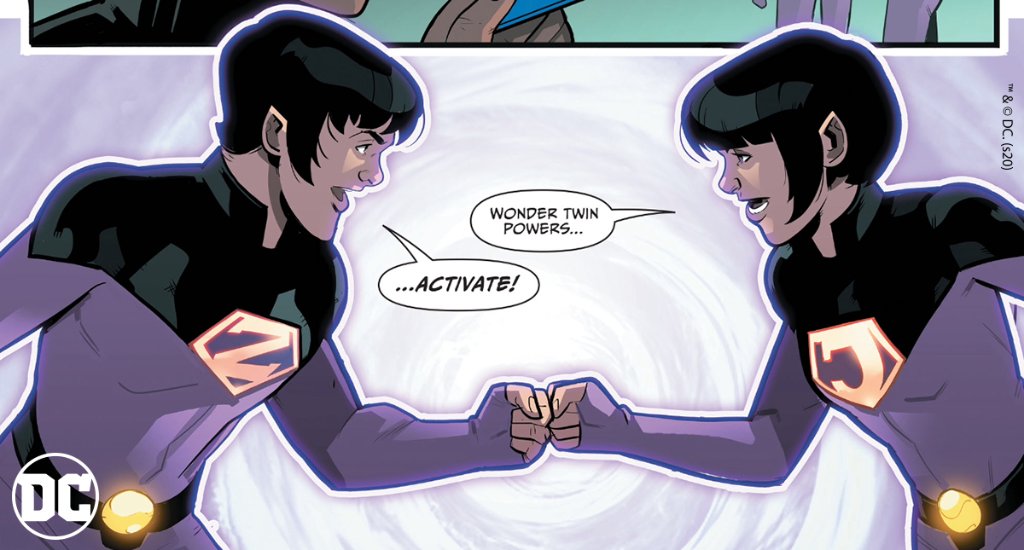Table of Contents Show
The Wonder Twins might not be the first superheroes that come to mind when you think of the Super Friends show that starred classic icons like Batman, Superman, and Wonder Woman. In 1977, shape-shifting, teenage twins Zan and Jayna first donned their iconic purple bodysuits on Hanna-Barbera‘s animated television series, The All-New Super Friends Hour. Thus, the Wonder Twins inserted themselves into DC pop culture — for better or for worse — and remain either largely forgotten or facing the punchline of superhero sidekick jokes.
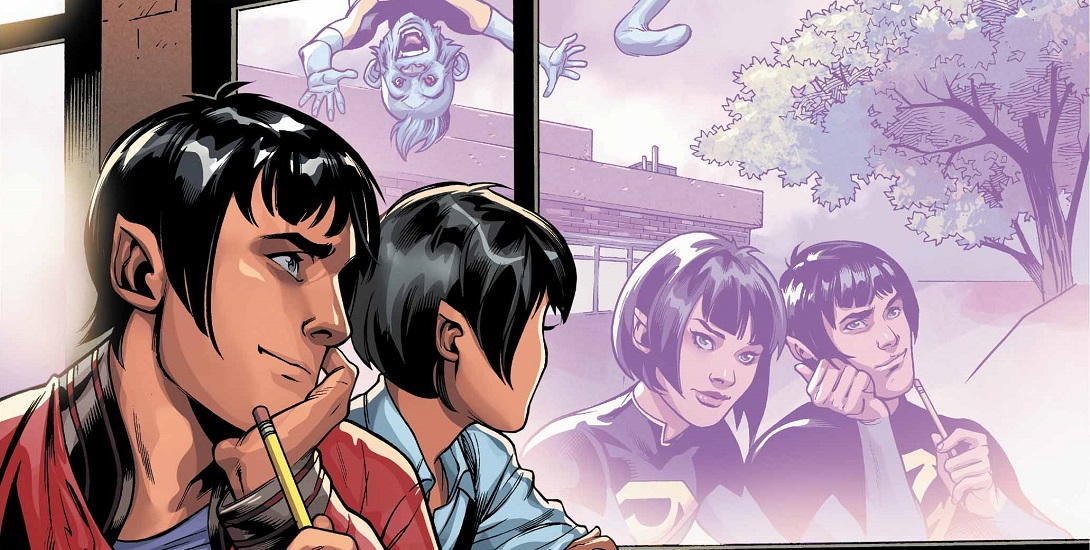
Beloved social satirist Mark Russell revived these largely marginalized twins in 2019 with a six-issue comic mini-series aptly titled Wonder Twins. A fan of the original characters, Russell, the critically acclaimed writer of The Flintstones (2016) and The Snagglepuss Chronicles (2018), dove back into the Hanna-Barbera universe with Wonder Comics for this project.
Russell’s classic wit combined with artist Stephen Byrne‘s beautiful inking, coloring, and character designs immediately drew readers to this comic. Humor and background gags that surface throughout this hilarious twelve-issue maxi-series are sure to foster a newfound admiration for the body-transforming Wonder Twins. Importantly, Wonder Twins also posits whether the ideologies surrounding justice emerge as the narrative’s real shape-shifters.
Power Always Couples With Responsibility
The Wonder Twins never had the most… ideal powers in the Hanna-Barbera cartoons, to say the least. Firstly, Zan and Jayna’s powers can only activate when they are together, fist-bumping and chanting their wonderfully cheesy slogan, “Wonder Twin powers… activate!” While it reinforces their sibling bond, their superpowers are useless if one of them finds themselves in a lonely predicament. Secondly, the shape-shifting superheroes can transform into an animal (Jayna) and… water (Zan). Due to their powers’ conditional nature, the Wonder Twins seem like almost useless heroes among the Justice League leaders’ ranks.
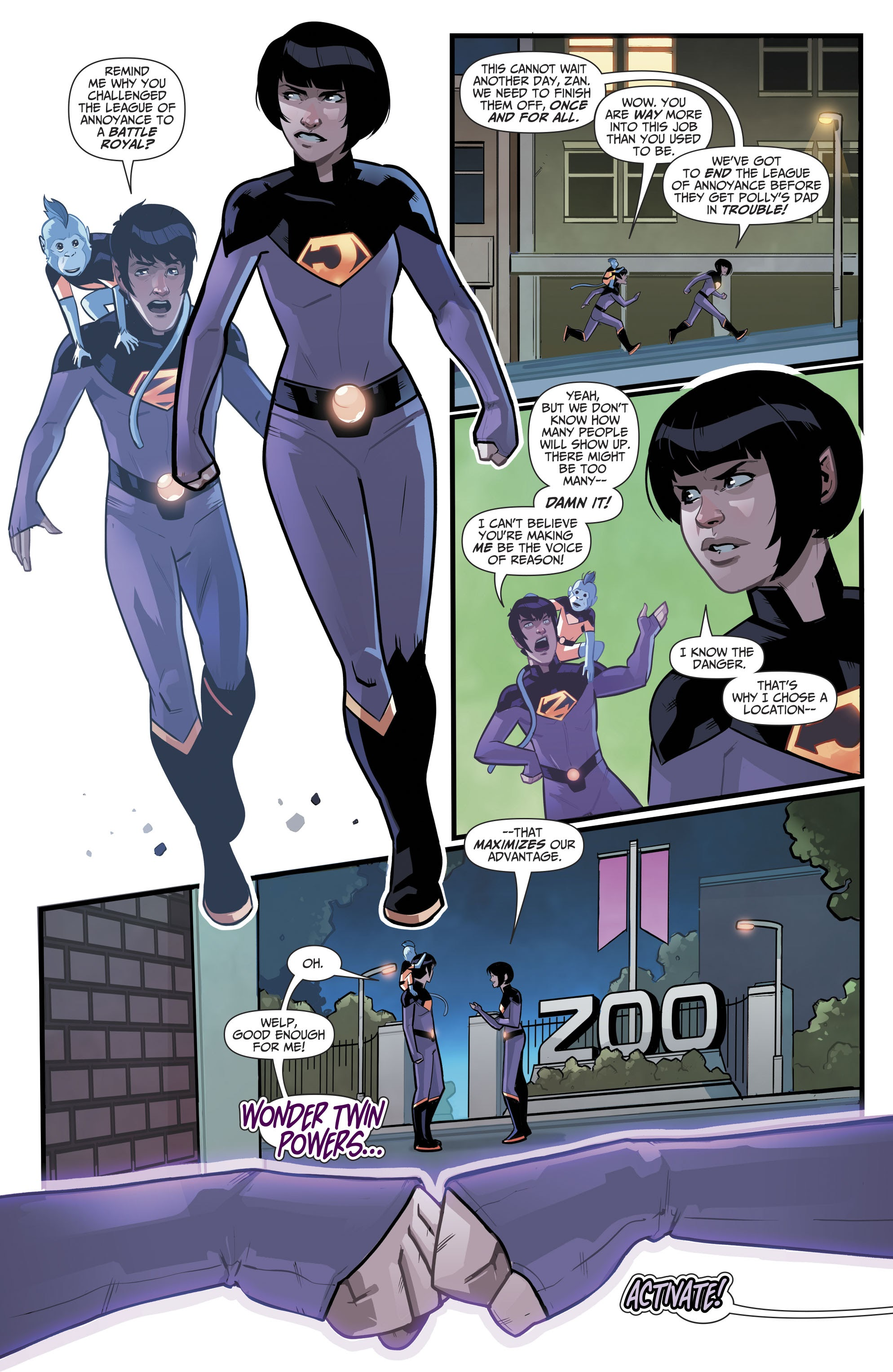
Russell integrates tropes from Super Friends to re-imagine the minor characters of Jan and Zayna as high-school attending teenagers sent to Earth. Exiled from their home planet Exxor for initially undisclosed reasons, Zan and Jayna work as interns for the Justice League after school. Responsibility heavily influences the Wonder Twins’ actions as they navigate life as immigrants on a new planet with unsolvable crime and social issues. On Exxor, the twins lived in inexplicable harmony with nature, society, and one another. Earth presents new challenges for these teenagers with almost insignificant powers, especially in comparison to their new father figure, Superman.
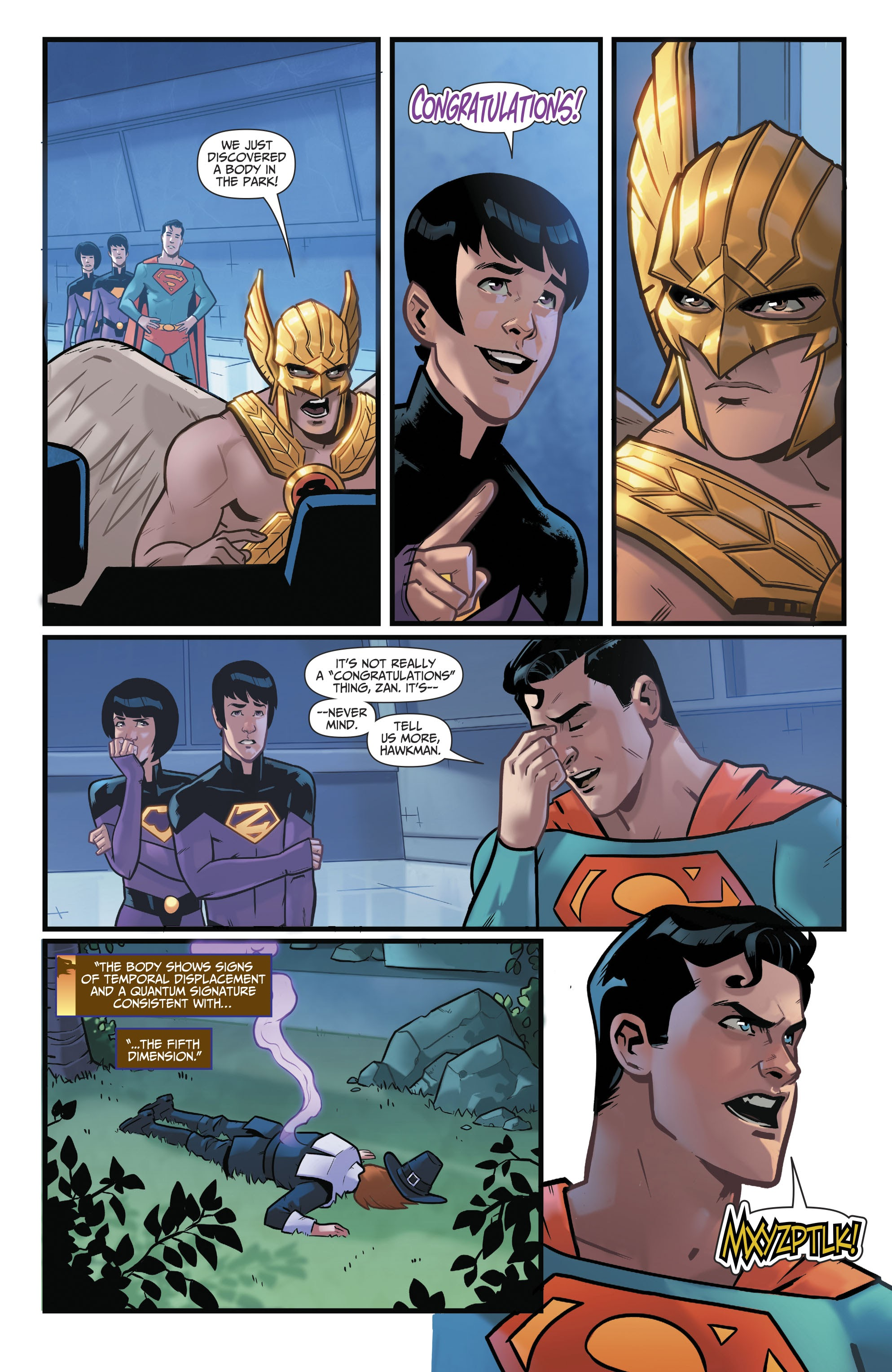
Undeniable humor is retained throughout, yet heavy themes about racial disparities, animal abuse, and — most importantly — justice also served in catapulting the unprecedented success of the comic. The serialized narrative manifests as equally (or even more) engaging in Wonder Twins Vol. 2: The Fall and Rise of the Wonder Twins (2020). Zan and Jayna perpetually endure strife that comes with teenage life. Nevertheless, they learn to balance responsibility with battling crime that feels hopelessly indefinite, all in the name of “justice.”
Justice: Shape-Shifting Connotations
Textbook definitions of the word “justice” cannot begin to denote the social complexities involved. While the Justice League is dedicated to saving the world from international and inter-dimensional threats, the twins struggle to define justice’s cost at a more intimate level. Zan and Jayna resided in a perceived Utopia on Exxor, where justice prevailed without challenges. Contrastingly, Earth is rife with systematic xenophobia, classism, and racism. Russell refuses to shy away from his trademark social commentary that provides thematic subtext in Wonder Twins. While the color palette is reminiscent of its cartoon predecessor, Byrne’s thoughtful detail also flawlessly captures the comic’s emotional narrative depth.
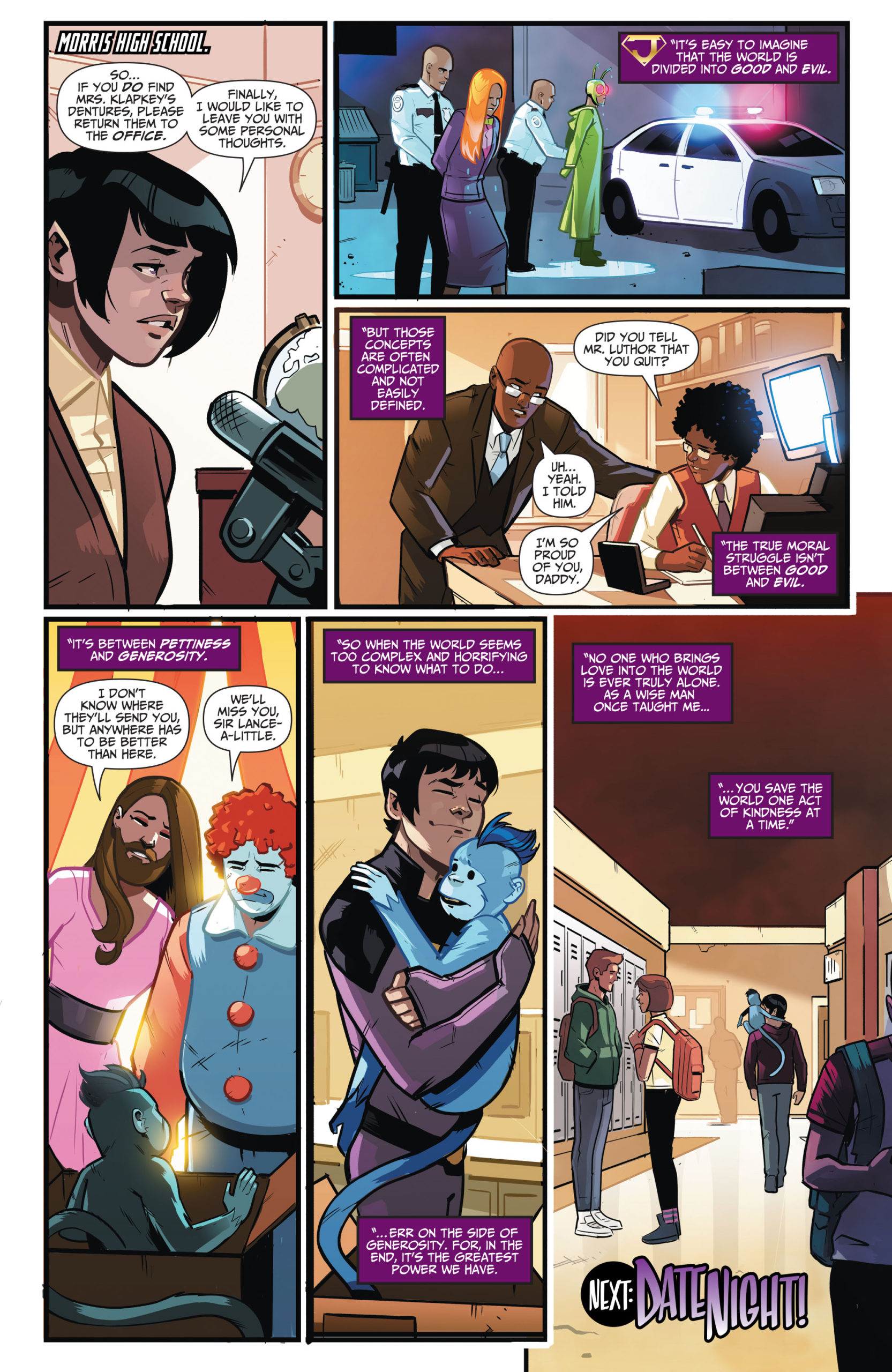
Wonder Twins never falters in its commitment to unpacking human emotional response toward both justice and injustice. The creators give everyone’s favorite blue monkey, Gleek, a heart-breaking backstory concentrated on animal abuse injustice in traveling circuses. As a result, Gleek’s lovingly co-dependent relationship with Zan transforms the monkey from sidekick into an emotional support animal. Polly, a new friend of Jayna’s, and her dad, Filo Math, encounter racial injustice after Filo is shot when approaching a white woman. Jayna grapples with prison system justice after minor villain Scrambler threatens to scramble the minds of everyone on Earth for “justice’s” sake. Here, Wonder Twins counters justice’s common denotations. Numerous story arcs reveal those tenets of justice yield shifting connotations.
Finding Purpose And Meaning In The Face Of Mass Injustice
Wonder Twins expands on banal platitudes and appeals to human sensibilities. Jayna’s greatest asset is her sensibility, but her sensitivity is what drives her toward discovering meaning in life. Zan’s outgoing nature makes him affable, but his protective nature really projects his internal care for others’ well-being. Whether Jayna feels guilt over not rescuing every immigrant or Zan is galvanized by his adolescent hormonal changes in public, the Wonder Twins seek purpose as aliens on planet Earth.
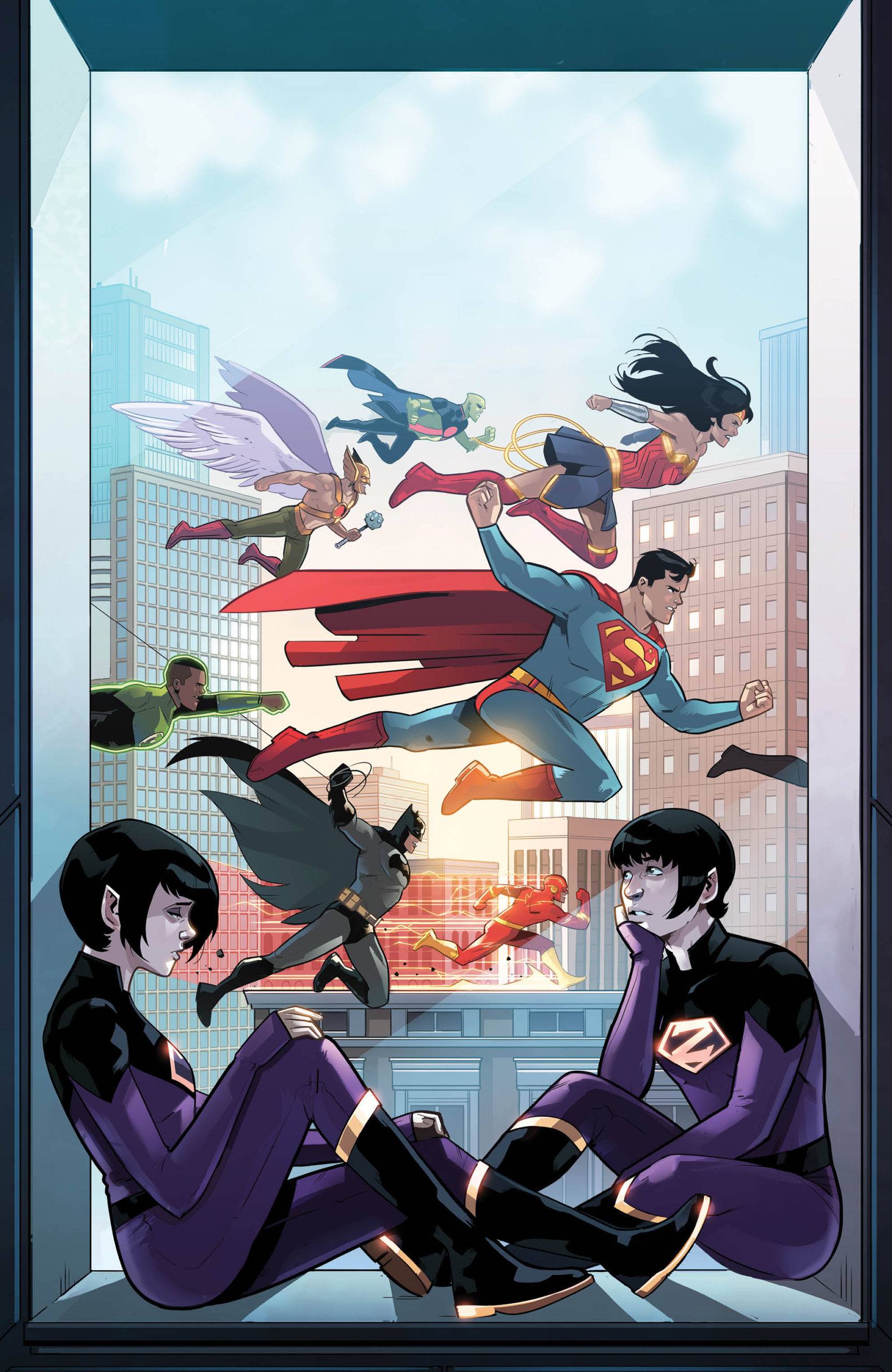
Russell and Byrne lace Wonder Twins with perfectly executed humor on every page and panel, yet equally integrate social issues without compromising the comic’s spirit. Critically, Lex Luthor’s character manifests as the ultimate example of justice’s ever-confusing connotations. Technological satire, such as an old computer program threatening to revert the world into outdated 90s technology, provides a hilarious insight into how much humanity has evolved with (and depends on) digital advancements.
The twins wonder about their purpose as superheroes — and teenagers — if rules can be bent to dominate evil. Despite mass injustice globally, each astutely executed panel in Wonder Twins proves that our guiding conscience and relationships allow us to celebrate life’s blessings. Searching for purpose should not cripple us, even throughout unceasing adversity.
Wonder Twins Activates The Power Of Transformation
Although change, purpose, and justice are high-concept topics, both volumes of Wonder Twins judiciously cover these important themes. Overall, jokes, gags, and comedy dominate this terrific comic series. Still, readers won’t be able to leave this comic without experiencing some insight or transformation of perspective regarding tenets of justice or the human experience. Maybe Zan and Jayna aren’t the most exciting superhumans in the DC universe, but Wonder Twins proves that these twin aliens are still irrecoverably and emphatically human.
